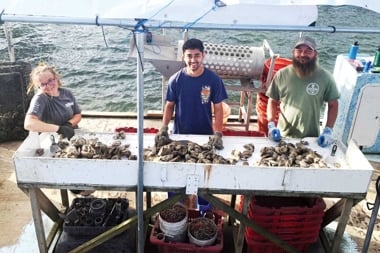Make Apples Your Super Snack

It doesnâ??t much matter, from a nutritional point of view, which kind of apple you eat. All apples are beneficial to health. But sadly, we currently consume only 20 pounds of fresh apples a year--less than an apple a week.
It doesn’t much matter, from a nutritional point of view, which kind of apple you eat. All apples are beneficial to health. But sadly, we currently consume only 20 pounds of fresh apples a year-less than an apple a week. It seems the Dutch are the only folks who approach the ideal of an apple a day.
So, what is in apples that makes them so good for you? First of all, they are fat-free, with only 80 calories per apple. They are an excellent source of carbohydrates. They contain naturally-occurring chemicals called flavonoids and many antioxidant phytochemicals, which may reduce the risk of heart disease and inhibit the development of certain cancers. They are also an important source of potassium, which regulates the body’s fluid balance and neuromuscular activity. An average apple contains 80 percent soluble fibre, which may help to lower blood cholesterol, and 20 percent insoluble fibre, which may prevent certain types of cancer. Did you know that an apple has as much fibre as a bowl of most popular cereals, an entire head of iceberg lettuce, a bran muffin or two bell peppers?
Organic Bites
Since coming to live and work in the Similkameen Valley five years ago, I have had quite a bit of exposure to both organic and conventional orch- ards. Conventional growers add chemical fertilizers to the soil to boost plant growth and increase production. They use herbicides to control weeds and chemical sprays to ward off insect infestations. Other chemical sprays are used to thin the apples by causing some to wither and fall off the trees. The peel of the apple ends up with the highest percentage of residues, but because the peel of an apple is so thin, the rest of the apple will still contain significant pesticide and fungicide residues. Washing an apple will not remove these systemic chemicals.
Organic apple growers use the tiller, the hoe and the hand to control weeds, instead of chemical herbicides. Instead of chemical fertilizer, the organic orchardist employs compost and manure. Instead of chemical sprays to control insects, the organic grower uses a variety of natural methods, including crop rotation, interplanting and pest specific non-toxic sprays.
Coddling moths have been successfuly controlled by sterile insect release programs. In the Similkameen Valley in BC, these moths almost destroyed the organic growers’ crops. The Summerland Research Station captured some of these creatures and bred them in the lab and then sterilized the males. They released them back into the orchards, where they mated with female moths. The eggs produced were sterile and therefore no offspring hatched. This eventually reduced the coddling moth population over a period of three years to near extinction.
Another method that was also used to control the coddling moth population was to use pheromone (sex hormone) confusion. Ordinary twist ties infused with the sex scent of the female coddling moth were attached to the fruit trees. The male coddling moth would gravitate to these twist ties and become confused, thereby disrupting the mating cycle!
So, aside from many other reasons for buying organic versus conventional apples, such as preventing soil erosion, keeping the environment healthy for future generations, and protecting water quality and farm workers’ health–which apple would you rather put in your mouth? For myself the answer is clear. A certified organic apple, and probably a Jonagold...but then again, what about the crispy, juicy Sunrise apples coming up soon?
The Many Ways
Apples are best stored in cold temperatures–zero to one degree C–and therefore should be cool to the touch when selecting. Make sure you choose fruit that is firm to the touch. The smaller the apple, the more likely it is to be firm, but size is no guarantee. Be sure to wash even an organic apple before eating. You don’t know who has handled it!
Some varieties of apples are best for baking and cooking and others are best eaten fresh. Try them all to discover your personal favorite. I was a big fan of the Fuji apple until I tasted a Jonagold. This is now my hands-down favorite apple and I use it for baking as well as for the delightful experience of biting into one that is juicy and fresh.
At home, store apples in your refrigerator to maintain their crispness. They will keep for approximately six weeks if you purchase them at harvest or after they have just come out of a controlled atmosphere room. (These are sealed apple storage rooms in which the atmosphere is controlled to extend the life of an apple up to about a year.) Apples produce ethylene gas, which causes their deterioration. But guess what? There are now little ethylene eaters available that you can purchase and put in your refrigerator fruit bin to prolong the life of your fruit!
Apples are incredibly versatile. You can bake them, dry them, juice them, can them and freeze them. You can make applesauce, apple butter, cakes, cookies and pies. You can turn apples into juice, wine and apple cider vinegar. There seems to be no end to their many applications.
Breakfast:
- Add chopped fresh apples to cooked oatmeal or muesli (soaked grains).
- Mix shredded apple into your whole-grain waffle or pancake batter.
- Top pancakes or waffles with applesauce made by pulling raw apples through a food processer, blender or juicer.
- Use organic apple juice as a base for your smoothie.
Lunch
- Pack a fresh apple with your lunch.
- Add shredded apples to a peanut butter sandwich.
- Spread a seed or nut butter on thick apple slices.
- Add shredded apples to coleslaw.
Dinner
- Use apple slices in a mixed green or spinach salad.
- Add chopped apples to a fruit salad.
- Saut?liced apples with red cabbage.
- Stir chopped apples and raisins into a rice pilaf.
- Bake apples for dessert.




